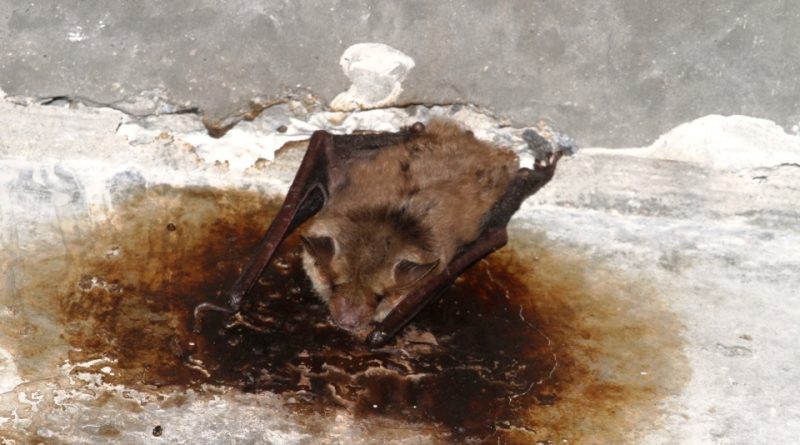Myotis punicus
Myotis punicus
The Felten’s myotis (Myotis puniticus Felten, Spitzenberger, & Storch, 1977) is a bat belonging to the Vespertilionidae family.
Systematic –
From a systematic point of view it belongs to:
Eukaryota domain,
Kingdom Animalia,
Phylum Chordata,
Mammalia class,
Superorder Laurasiatheria,
Order Chiroptera,
Suborder Microchiroptera,
Family Vespertilionidae,
Subfamily Vespertilioninae,
Genus Myotis,
Species M. Punicus.
The term is synonymous:
– Myotis blythi subsp. Punicus Felten, Spitzenberger & Storch, 1977
Geographic Distribution and Habitat –
Myotis Punicus is a bat with a distribution area that includes Northern Africa and Europe.
In detail it is found in Algeria, Libya, Malta, Morocco, Tunisia, France (Corsica) and Italy (Sardinia).
Its natural habitats are temperate forests, temperate shrubs, subtropical or tropical dry shrubs, Mediterranean-type shrubby vegetation, temperate grasslands, caves, underground habitats (other than caves), arable land, rural gardens and irrigated land. The range of the habitat extends to the edge of the Sahara Desert. In Tunisia, the species has been observed as far south as Ghomrassen or in the Bou-Hedma National Park. It has been found from sea level up to over 1000 metres.
Description –
The Myotis Punicus is a medium-sized bat, with a total length between 107 and 139 mm; the forearm length is between 53 and 65 mm, the tail length is between 47 and 62 mm, the foot length between 11 and 15 mm, the ear length between 22 and 27 mm and a weight of up to 33 g.
It has short, dense, woolly fur and extends to the base of the uropatagium. The dorsal parts are light brown, while the ventral parts are whitish. The base of the hairs is darker everywhere. The ears are long, wide, with 7-10 longitudinal folds on the internal surface of the auricle and a round lobe at the base of the external lobe. The tragus is long, thin and lanceolate. The alar membranes are brown and attached posteriorly to the base of the toes, which are normal in size. The end of the long tail extends beyond the broad uropatagium. The calcar is short and without reinforcing lobes.
Biology –
As regards the biology of Myotis Punicus, it is a bat which, at least as far as the specimens roosting in northern Tunisia are concerned, seems capable of giving birth much earlier in spring than the closely related species Myotis myotis or M. blythii in Europe or Asia western. Furthermore, individuals born that year and capable of flying were observed in the El Haouariya caves on 24 May 2011 (i.e. these juveniles were born between 3 and 4 weeks earlier).
During mating, males establish small territories on the vaults of caves where they attract females. Each male subsequently maintains a small harem of 1-4 females. During the summer, nurseries are established that can contain up to a few thousand pregnant females.
They generally give birth to one young at a time between mid-April and mid-May.
Furthermore, the young disperse from July to the end of October.
Ecological Role –
Myotis Punicus is a bat that takes refuge singly or in groups of up to several thousand individuals in caves and abandoned mines.
It is therefore a cave-dwelling species that uses natural cavities (caves and chasms) and artificial cavities (tunnels, water mines or rhettara) as shelter and also dark areas of abandoned buildings.
This bat feeds on crickets, cockroaches, spiders and scorpions caught on the ground in arid areas or in forests without undergrowth.
Regarding threats, it is reported that some known colonies in Morocco have disappeared due to trade for folk medicine practices. In Ceuta the known shelters are very accessible and vulnerable.
The IUCN Red List, considering the decline of its cave habitat due to exploitation and human disturbance and the existence of a small number of colonies, classifies M. Punicus as a species near threat of extinction (Near Threatened). In the Mediterranean islands the estimated population is around 7,000-9,000 individuals.
Guido Bissanti
Sources
– Wikipedia, the free encyclopedia.
– GBIF, the Global Biodiversity Information Facility.
– Gordon Corbet, Denys Ovenden, 2012. Guide to the mammals of Europe. Franco Muzzio Editore.
– John Woodward, Kim Dennis-Bryan, 2018. The great encyclopedia of animals. Gribaudo Publisher.
Photo source:
– https://inaturalist-open-data.s3.amazonaws.com/photos/87171385/original.jpeg


